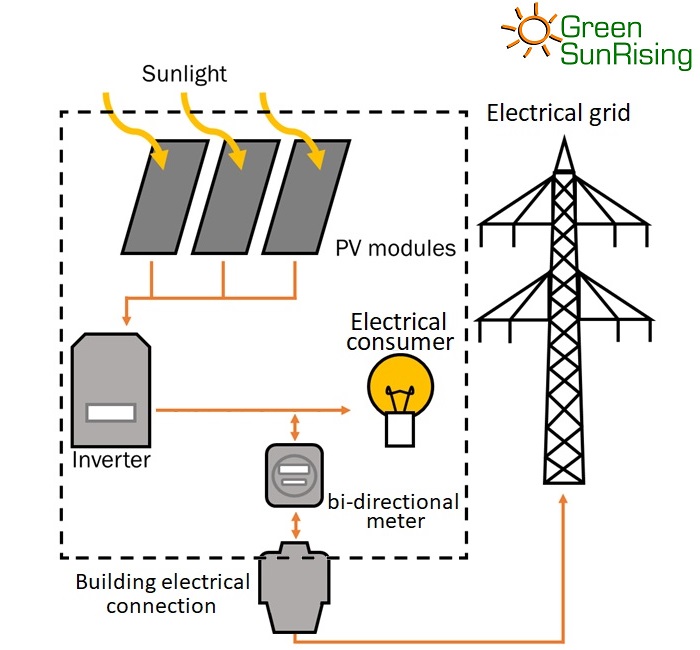Solar Photovoltaic (PV)
There are quite a few ways to harness the sun’s energy. Photosynthesis for plants is the most common example we see everyday. But as humans, we rely on alternate methods to meet our needs. One of the most common examples is what you see on a simple calculator, a tiny solar cell which powers the calculator for regular use without needing to replace a battery. In essence, this is just like a solar photovoltaic (PV) system, which generates electricity from the sun’s rays (albeit on a larger scale). But instead of powering a single device, a solar PV system allows a person to provide energy needed to power many appliances or lights for a house or building.
That is what a solar PV system does in principle, and the benefits are various, such as: generating your own electricity (which means you pay less to your local utility), producing environmentally clean energy (not relying on pollution-emitting sources for energy), becoming more energy-conscious (particularly infectious with solar monitoring to see how much energy you produce vs. consuming), added protection for your roof/shingles, just to name a few.
A solar PV system has a few key components that allow it to function, they are: the modules (panels), the inverter, the mounting system, rapid shutdown, rodent protection, a generation meter, and wiring. Currently, the best way to utilize a solar PV system is through net metering.
For more information on solar PV, click here.
Solar Thermal (ST)
Solar thermal systems use the sun’s thermal, or heat, energy to increase the temperature of water. Water heating can be costly over time, and a solar thermal system for domestic hot water could save homeowners tremendously.
A well made solar collector can have a thermal efficiency of up to 80%, making solar thermal a very efficient way to harness the sun’s energy. Under favorable sunny conditions, solar energy will be enough to cover the complete water heating needs. A supplemental water heater is used for times when solar energy in not sufficiently available. Typically 40 to 50% of the annual hot water needs of a household can be met with solar energy, and a well built system will have a productive life span of 25 to 40 years.
After the initial system investment, the sun’s energy is for free, without future price increases due to rising fossil energy costs. And it is clean and non-polluting. Why should we mortgage our children’s future with avoidable CO2 emissions when we can use solar energy for what solar energy can do so well, namely heating water? This also and particularly applies to pool heating. No fossil fuels should be used any more for pool heating, since solar energy can do this so much better, and non-polluting.
It is a common misconception that Canada does not get enough solar energy or is too cold for solar thermal heating. To the contrary, Canada is very suitable for the use of solar energy. Southern Canada gets more sun energy than Germany, where over 1 million solar thermal systems are already installed and are reliably performing their functions.
The European parliament has passed a resolution recommending to all member countries to introduce legislation mandating the use of solar thermal systems in all new residential buildings. In parts of Europe as well as in countries like Israel and China, solar thermal has become mainstream.
For more information on solar thermal, click here.
For questions and inquiries, you can contact us through our contact page, by phone at 519-946-0408, or email us at info@greensunrising.com.


You must be logged in to post a comment.